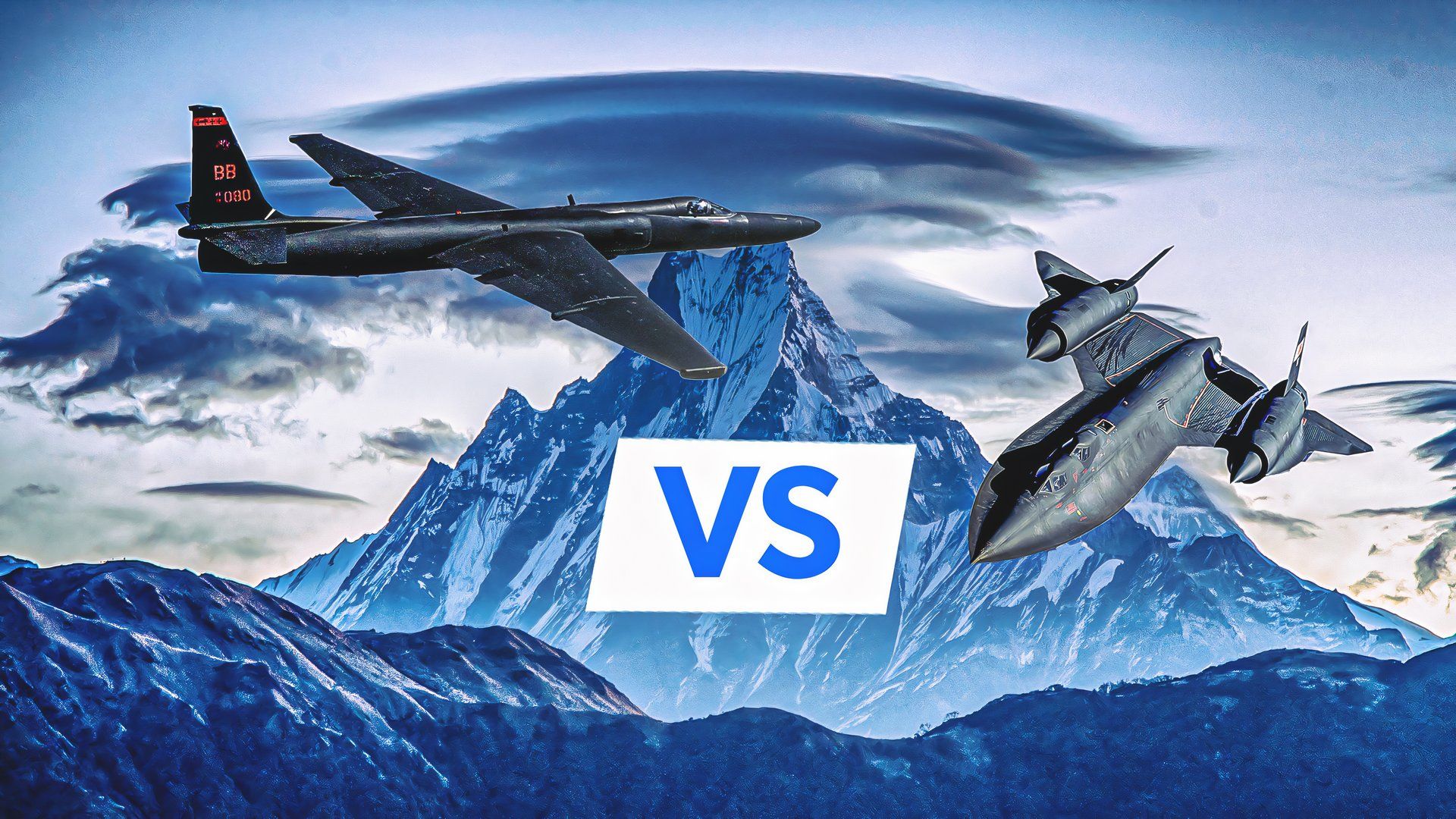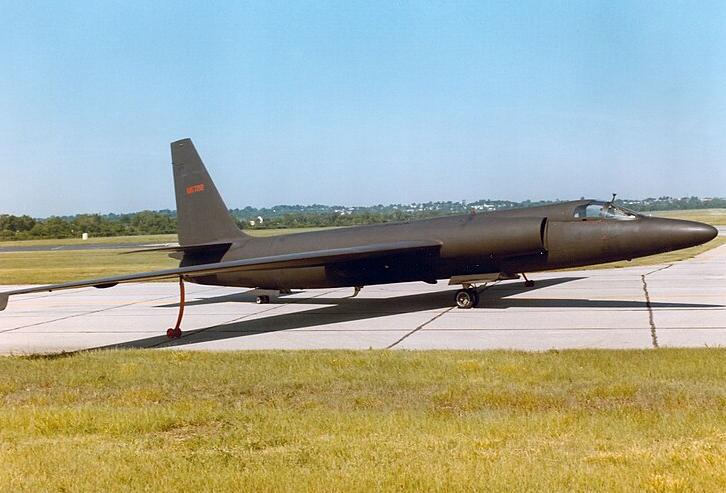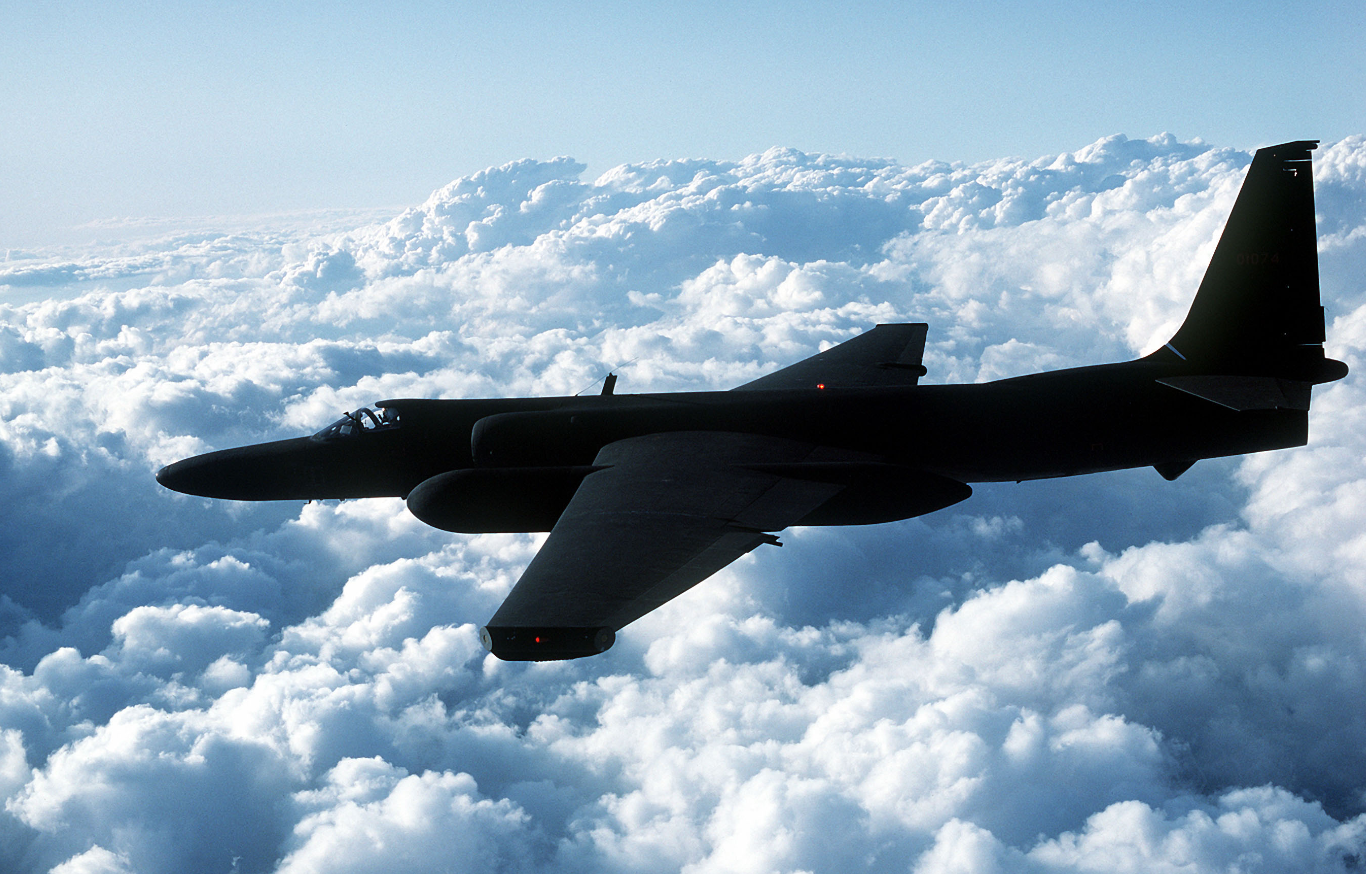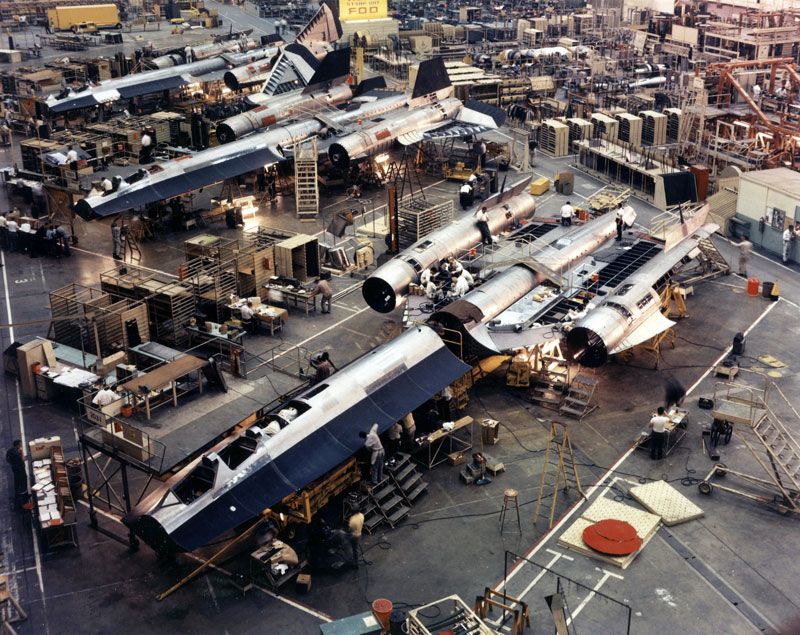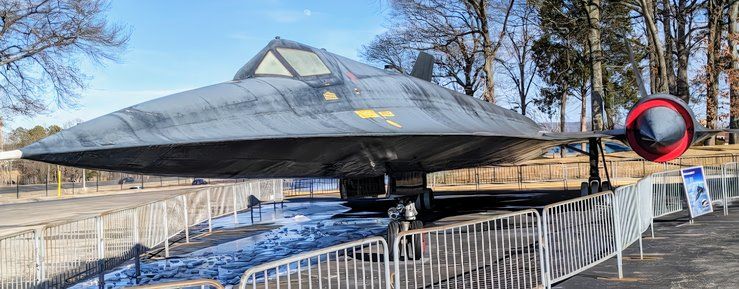Who would win a battle in the skies, a Dragon Lady or a Blackbird? These are the nicknames of two high-altitude reconnaissance aircraft used by the United States Air Force (USAF) and the National Aeronautics and Space Administration (NASA).
The U-2: the Dragon Lady
The U-2 is an American high-altitude reconnaissance aircraft built by the Lockheed Corporation for the USAF and NASA, starting in the early 1950s. At this time, the United States was concerned that the Soviet Union would be able to achieve its long-term objectives, and this is why the United States needed a new and improved aircraft that could be effective.
Photo: USAF
Photo: USAF
The National Museum of the United States Air Force notes that “Lockheed’s secretive “Skunk Works” plant in California, under the direction of designer Kelly Johnson, proposed a new jet called the Model CL-282. The design had very long, high-efficiency wings, and was lightweight enough to carry heavy cameras to altitudes over 70,000 feet, or about 13 miles.” The National Museum of the United States Air Force also said that the CIA accepted Lockheed’s design and used the term “Aquatone” as its codename.
On July 17th, 1956, Herbert I. Miller wrote a memorandum to the CIA project director about suggestions of the elevated level of intelligence value that the U-2 program could bring to the United States. As mentioned previously, the aircraft’s name, U-2, had been replaced with the term “Aquatone” because the U-2 program was top secret at the time.
“In this light, the danger to our international relations appears to be far greater if we do not carry the AQUATONE plan than if we do carry it out, having laid sufficient groundwork to assure that the interpretation of the activities is an intelligence operation rather than as a reconnaissance prelude to hostilities.”- Herbert I. Miller, Memorandum written for the project director
Over the years, the U-2 has been powered by several types of
Pratt & Whitney
jet engines, and now,
General Electric’s
F188-101 engine. Furthermore, as time passed, further advancements in development improved the aircraft, such as the U-2R, which the United States Air Force has said was “40% larger and more capable than the original aircraft.”
Another U-2 model, the TU-2U, was introduced and first flown in 1981. It was used for training, and the Air Force has said it is also used for “tactical reconnaissance.”
The current U-2s have been upgraded and heavily invested in, with 1.7 billion dollars going to the project that included adding General Electric’s F188-101 engine to them and classifying them as model “S.” The chart below goes into more depth regarding the General Characteristics of the U-2S.
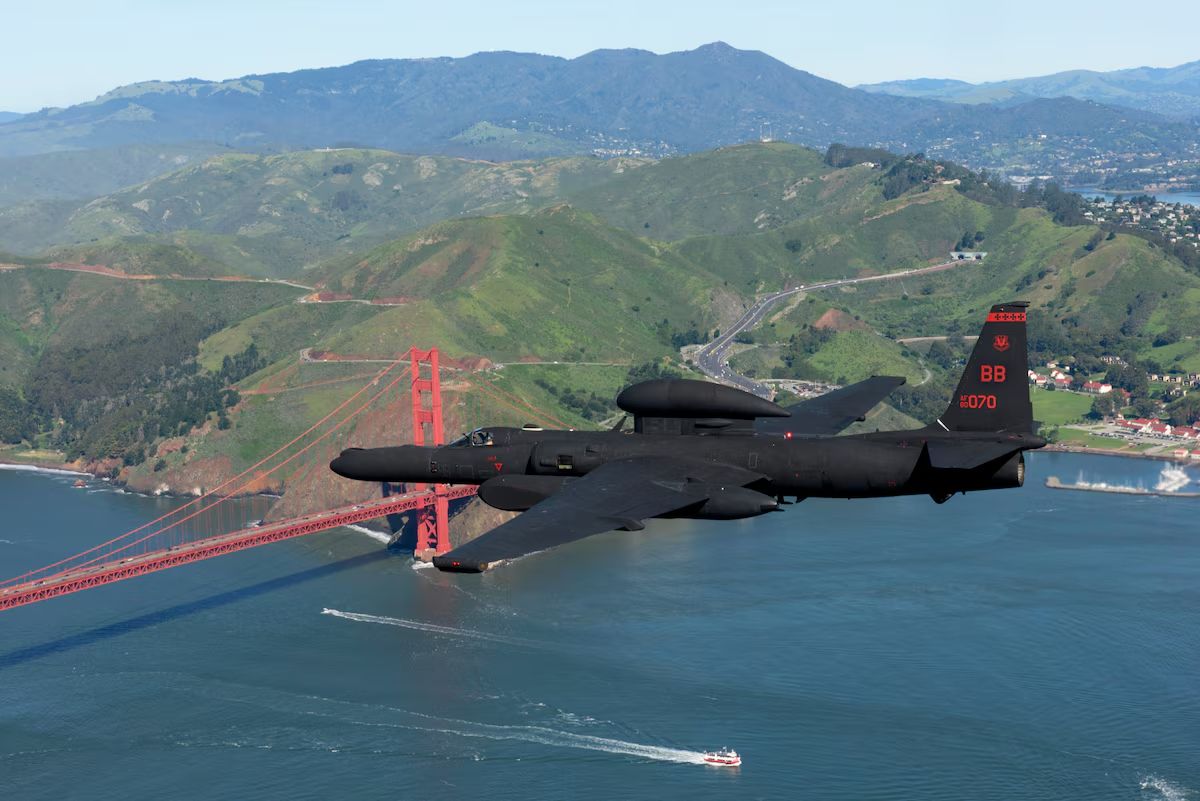
Related
5 Fascinating Facts On The Sleek USAF U-2 Dragon Lady Spy Plane
What do UFOs, bicycles, and tube food have in common? They’re all part of an unforgettable night out with the Dragon Lady.
Additionally,
NASA
operates two Airborne Science ER-2 aircraft for satellite verification and other science-related missions. NASA has said that “since the Airborne Science Program’s inaugural flight on Aug. 31, 1971, NASA U-2s and ER-2s have flown more than 4,500 data missions and test flights in support of scientific research.”
Many knew the U-2 as the Dragon Lady. The nickname came from a popular comic strip character in the 1930s. During that time period, the Dragon Lady was a nickname that stereotyped Asian women as seductive and dangerous.
|
General Characteristics |
The U-2 “Dragon Lady” |
|---|---|
|
Primary function: |
High-altitude reconnaissance |
|
Contractor: |
Lockheed Martin Aeronotics |
|
Power plant: |
One General Electric F118-101 engine |
|
Thrust: |
17,000 pounds |
|
Wingspan: |
105 feet (32 meters) |
|
Length: |
63 feet (19.2 meters) |
|
Height: |
16 feet (4.8 meters) |
|
Weight: |
16,000 pounds |
|
Maximum takeoff weight: |
40,000 pounds (18,000 kilograms) |
|
Fuel capacity: |
2,950 gallons |
|
Payload: |
5,000 pounds |
|
Speed: |
410 mph |
|
Range: |
More than 7,000 miles (6,090 nautical miles) |
|
Ceiling: |
Above 70,000 feet (21,212+ meters) |
|
Crew: |
One (two in trainer models) |
|
Unit cost: |
Classified |
|
Initial operating capability: |
1956 |
|
Inventory: |
Active force, 33 (5 two-seat trainers and two ER-2s operated by NASA); Reserve, 0; ANG, |
Source: United States Air Force Fact Sheet
The SR-71: the Blackbird
In 1966, the Lockheed Corporation introduced the Lockheed SR-71 “Blackbird,” another reconnaissance aircraft. This aircraft also served the USAF and NASA until 1998 and 1999, respectively.
The SR-71 was developed from the Lockheed A-12’s black project. A black project is one that is not publicly recognized by any government, organization, military personnel, or anyone familiar with the matter. Dictionary.com says black projects are “a covert undertaking by a country’s military and defense forces, often carried out at a secret location, outside the law and other systems of protection.”
An A-12 Oxcart Article 127 is shown on display, located at the U.S. Space & Rocket Center in the state of Alabama.
Once the United States Air Force (USAF) started operating SR-71, it finally got its name “Blackbird” because of the unique black paint that it needed to be covered with.
The Smithsonian Institute says that the aircraft “acquired the official name Blackbird– for the special black paint that covered the airplane. This paint was formulated to absorb radar signals, to radiate some of the tremendous airframe heat generated by air friction, and to camouflage the aircraft against the dark sky at high altitudes.”
The SR-71 was designed to be used at high elevations, just like the U-2. However, it could fly even higher, reaching 85,000 feet. The SR-71 could reach speeds of up to Mach 3.2, or 2,190mph. NASA says that the SR-71 Blackbird is still the highest and the fastest aircraft ever built.
“The Blackbirds were designed to cruise at Mach 3.2, just over three times the speed of sound or more than 2,200 miles per hour and at altitudes up to 85,000 feet.” – NASA
|
Technical Notes |
The SR-71 “Blackbird” |
|---|---|
|
Speed: |
Mach 3.2+ (2,200+ mph, 3530+ km/h) at 80,000 ft (24,000 m) |
|
Combat Range: |
2,900 nmi (5400 km) |
|
Ferry Range: |
3,200 nmi (5,925 km) |
|
Service ceiling: |
11,810 ft/min (60 m/s) |
|
Payload: |
3,500 lb (1,600 kg) of sensors |
Source: Pacific Coast Air Museum
The USAF retired its fleet of Blackbirds on January 26, 1990, because of a “decreasing defense budget and high costs of operation.” However, the U-2 is still in service. With that said, both reconnaissance aircraft have some of the best technology, pilots, and stealth, which makes them a force to be reckoned with in the skies.
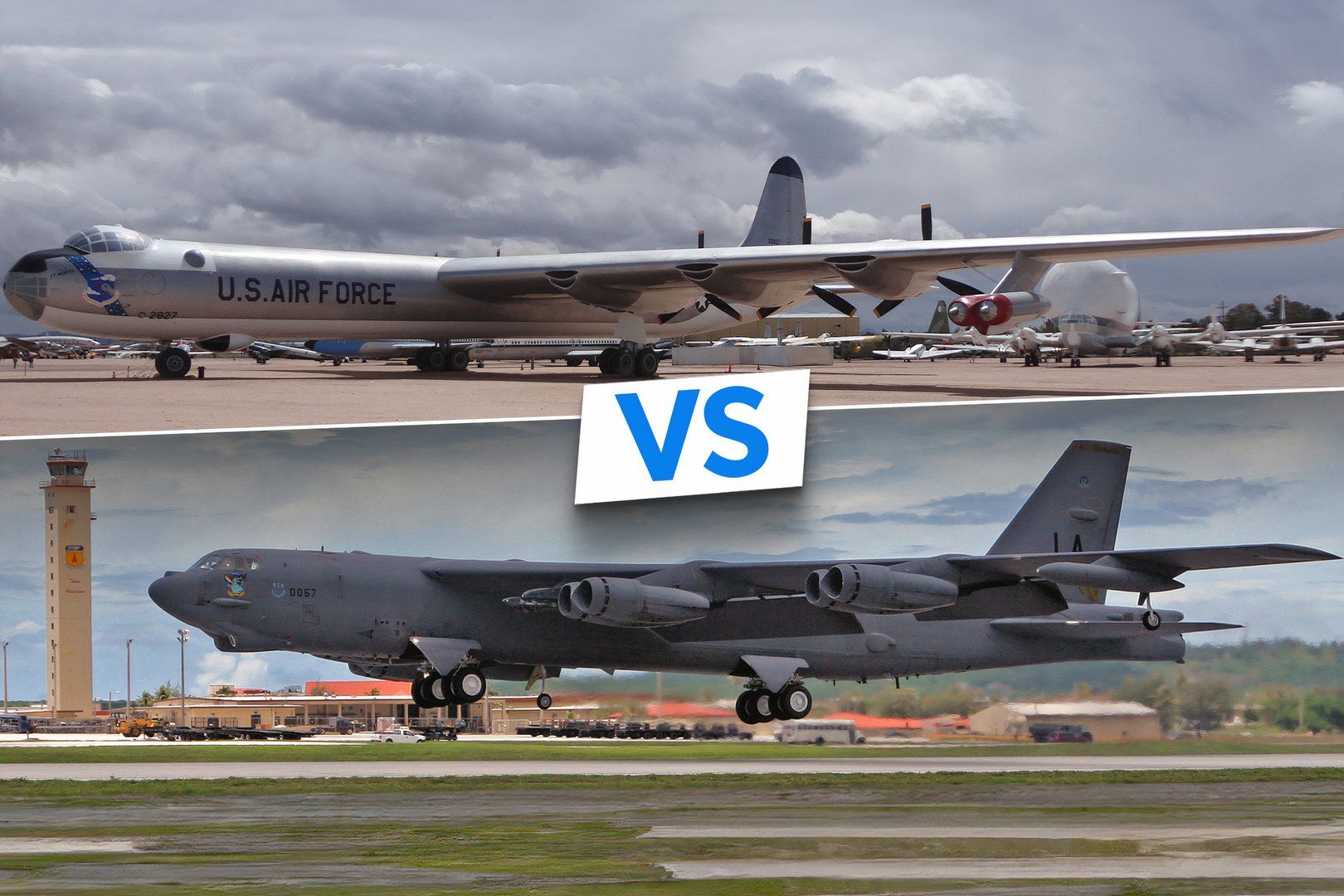
Related
B-52 vs B-36: Comparing The USAF’s Epic Bombers
These bombers helped the United States Air Force win the Cold War and beyond.

